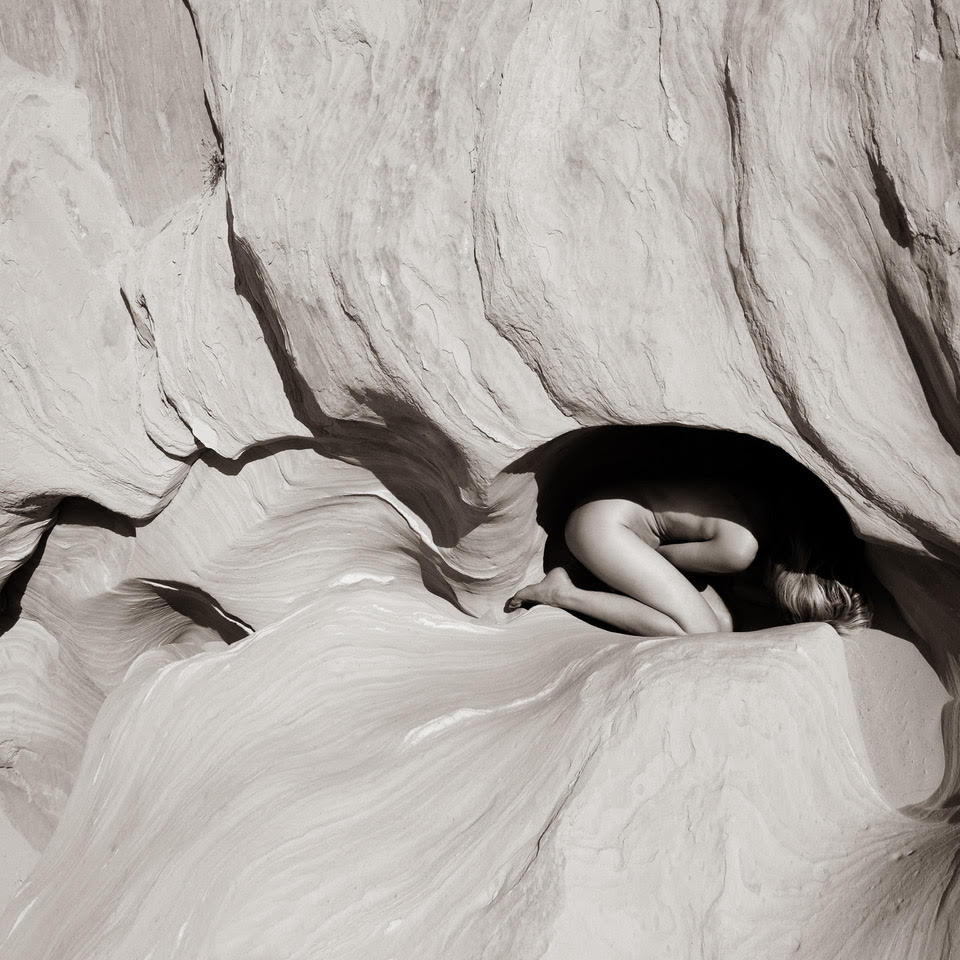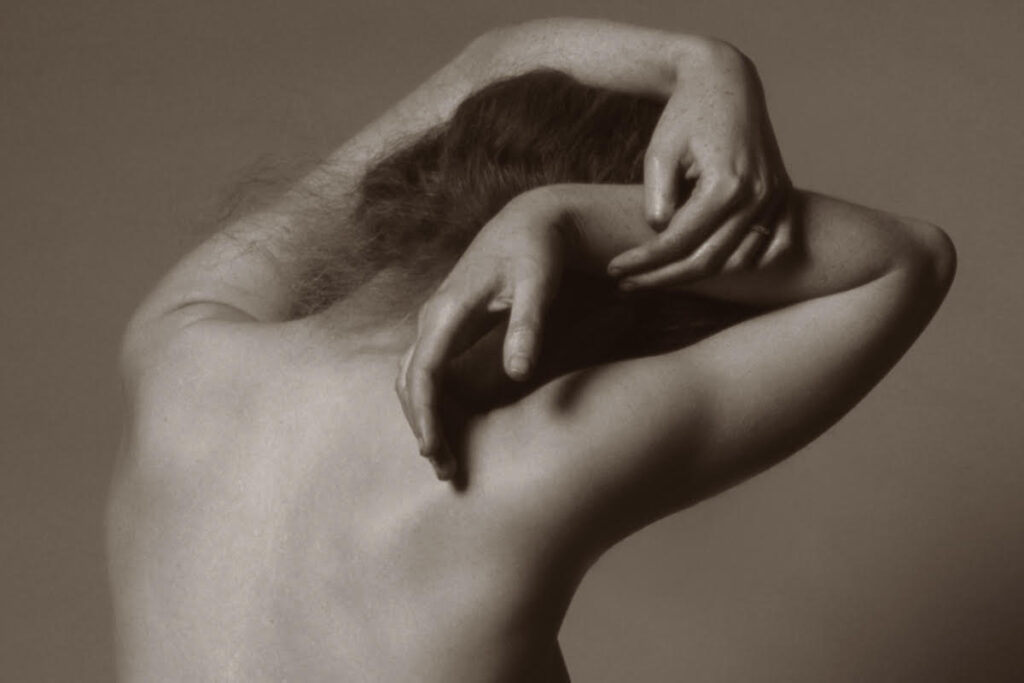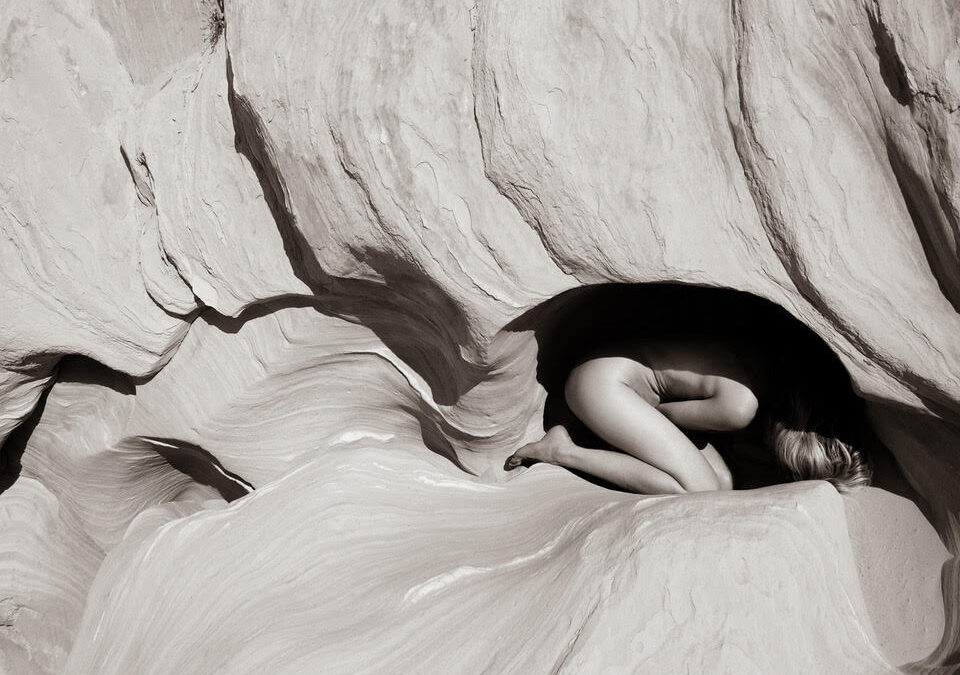
Peter Kagan’s upcoming exhibition Life + Limb at Topanga Canyon Gallery will share 33 images from a body of his photography work that spans decades. It’s also the title of his new book, which will be available at the gallery. The exhibition will be Peter’s first in a brick and mortar gallery, a departure from his award winning directorial work, or showcasing his photography, documentary style on Instagram. If Peter isn’t in study, tucked peering into a camera lens, he is likely to be at his shop, Canyon Gourmet, or exchanging with farmers in Santa Monica sourcing the most beautiful tomatoes in the canyon. The striking black and white photographs in Life + Limb are ephemeral, intensely personal and exude history. For Peter, this installation took a lot of digging and a little giving in to the insistence of friends, like his mentor Arthur Elgort, who often asked, “When are you going to do a show?”
Peter lost his father, Michael Kagan, at a very young age. After his death, he found boxes of pictures and bags full of cameras that had belonged to him. “The fog of sadness of that happening as a little boy really muddles your view of the world,” he said. “People lie to you and won’t tell you the truth about things. You get this distorted view of the ghost of this person that is unrealistic, sometimes tortuously so.” Losing his father at a young age left Peter yearning to more intimately know the man he was. Other than knowing he was an executive at a company that made parachutes, Peter knew very little about his father’s life. “I started looking through these photo albums because my mother wanted nothing to do with them,” he said. “It had everything in it, his old love life and it all just reminded her too much of him.”
It was evident that photography was something his father had excelled at. He had an eye not only for composition but he collected good cameras. “These albums answered a lot of the questions I couldn’t ask of anyone,” Peter said.
There was a particular camera that piqued Peter’s curiosity. He brought it to a photography teacher at his school at the time. “This teacher showed me how to use it and because of him, I decided to attend Rhode Island School of Design. I was not a great sportsman, I wasn’t good at anything except I had figured out this camera.”
Peter crafted a successful career as a director of films in fashion, music, and commercials, (you can view several examples here: https://vimeo.com/598938299) but rarely did he consider sharing any of his photography. In 2018 he began sharing a series of photographs on Instagram from his father’s albums on what would have been his 100th birthday. His intention was to develop a documentary-style body of work, but kismet touched the virtual world.
“People I had never heard of reached out and said, ‘I know who that is, in that photograph, do you know who that is?’” A woman from Italy who turned out to be Peter’s second cousin knew everyone in the photograph he shared, knew where they lived, shared maps and history. “All of a sudden, out of Instagram came this information about my father that no one had ever told me.” Peter said.
One of the documents discovered was a census form that indicated Peter’s father had lived near Crescent Heights in Los Angeles as a young man. To Peter’s astonishment, on the form his father l had filled out, under profession; photographer.
“I had no idea he had defined himself this way,” he said. “That’s how beautiful this echo was for me. The photographs are extraordinary and it became a template for me telling me, ‘This is what good photography feels like. This is how it can move you, how it can change your life.’ That is why I am a photographer. It was a destiny I didn’t know about.
“That is what Instagram can do. I had a sense of who you were, what you looked like, what you like, all of it comes out of that exchange. It can be as superficial or as crassly commercial as you make it, and it’s very easy to call it narcissistic or turn your nose up at it.
“I know people who find it disgusting. There are parts of it that are obnoxious or gratuitously sexualized. But consider this, if you are an art student and there is a gallery, and it’s free and anyone in the world can walk into that gallery and see that work—I don’t know how you could resist not wanting to be seen in that context. I didn’t do it for years and then my son said you should take a look, it’s sort of cool. There is nothing trivial about it as a venue.”
Peter considers Instagram like an art assignment. “I would wake up and think, how am I going to make that ‘empty wall’ (also known as an Instagram feed) work well? How am I going to step up creatively and represent myself well on this platform? How am I going to contribute to this gallery of mine today? I like sharing a series of photographs at a time. I have two different accounts, one is for my little store @canyongourmet and very rarely intersects with the more personal account which is primarily black and white photographs.” @peterkagan
Peter also found his curator and installation buildout companion Bonny, on Instagram. Bonny Taylor is director of the Print Studio at Film Solutions. “I reached out and she said, ‘What you have to do is sit down, look at your work, and make categories. See what happens.’ So that’s what I did. I forced myself as a bookkeeper and archivist to make order of the tens of thousands of pictures I have. I have folders full of portraits, folders full of the moon, a ten year project of all pictures of a specific tree. #myfavoritetree
“Artistically it’s very good to constrain yourself; I can only use this camera, or black and white film. I once got an assignment from a really scary teacher in my 3D class.We were to take corrugated cardboard that was stacked on the table and Elmer’s glue, using anything else would get you an F. Come in tomorrow morning with oranges. It was nonsense and I remember that assignment like it was yesterday. When you think about what glue can do or what an orange really looks like; those juice globules and the thin skin, the white pithy stuff under the skin, all of that you can make with glue. The next day people came in with oranges that could be peeled with the pith. The constraint of those two things forced these incredibly beautiful solutions. When someone has an excuse of why they can’t do this project or grouses about what they don’t have to make the right art, I always think ‘cardboard oranges’.
Peter discovered that his father’s first job after immigrating to America was working for his cousin who made radios in Detroit. Michael talked his cousin into making a line of cameras, one of them being the Detrola 400. At the very back of the Life + Limb exhibition,on the right, there is a photograph of Peter and his two sons, taken on Father’s Day. On the left is a handsome self portrait of his father Michael, taken with a tripod. The camera used in both images is a Detrola 400.
I ask whether the process of editing and laying out a book is one he might revisit in the future.
“When I made this book I thought, if I can only make one, this is what it needs to be. I have more in me, but this is the one I had to make first.”

There is another story to Life + Limb as a collection. Among his classmates at RISD (Rhode Island School of Design) was Francesca Woodman. “I don’t know if you have ever been in the presence of genius before, but that’s what she was. Our sophomore year, which is when we defined ourselves as photo majors for the first time, we were asked to bring in some pictures that represent what kind of work we want to do. This young girl walks into class with pictures of herself nude and puts them on the wall. There was nothing sexual about it. They were this brilliantly unbelievably courageous demonstration of artistic intention. It was elevated beyond the icicles, plants, snow and then this girl comes in with nude self portraits. These very self portraits she put on the wall that morning are in the Museum of Modern Art today. To be in the presence of that brilliance…you never unlearn that. Like Mozart, when you see it, experience it, hear it, that virtuosity.”
She was also a very difficult person to be friends with. In 1981, at the age of 21, Francesca committed suicide in New York City. It is a subject that is very tender and difficult to speak about for Peter, to this day. “You know, I was so angry at the time she committed suicide. That’s just how I reacted.
“There was a part of her that was diabolical, which was a very good lesson for a young man to learn. She and I became intimate friends.”
Francesca left Peter an incredible legacy of photographs and correspondence between the two. “I ended up saving everything and I am glad I did.” He has also spoken at museums about her, despite it being incredibly difficult for him.
“I have a very specific relationship with dead people and their photographs. Unfortunately I am an expert in this. Part of her brilliance was, when asked, why she was her own subject, ‘Because I am always available.’ She knew exactly what she needed. She didn’t need to direct because she was her own subject and her work today is this feminist tome, this self energized, needing no men around to direct the scene. When I took pictures of her, I realized that what she was giving me was art history. She was giving me a lesson in a certain feminine brilliance. This wisdom is an indelible imprint on my work and it’s why I only wanted to involve women in the project.” His team: Bonny Taylor, Janet Klein at AcuPrint, and book and logo designer Julia Luke.
The photography book opens to Xeroxes of Francesca in a collage of matchsticks, polaroids, pasted into his fathers calculus texts from Paris. She appears throughout the pages of his book, her arms, like tender wings, collaged next to the wings of a dragonfly.
“I realized there was this thing that connected to the pictures I took as a young boy and the pictures that I take now — it’s gesture,” Peter said. “It’s about limbs, whether it’s tree limbs or arms and legs, this is a show about gestures. The subtext is a lot about loss and fragments I’ve collected and picked up, but it’s a show about gestures. A combination of lessons from dead people. Lessons that my father never taught me, facts and figures that I could never ask him about. The convergence of Francesca and my father there. ”Life + Limb exhibit and book signing opens September 11 at Topanga Canyon Gallery. www.peterkagan.com @peterkagan





